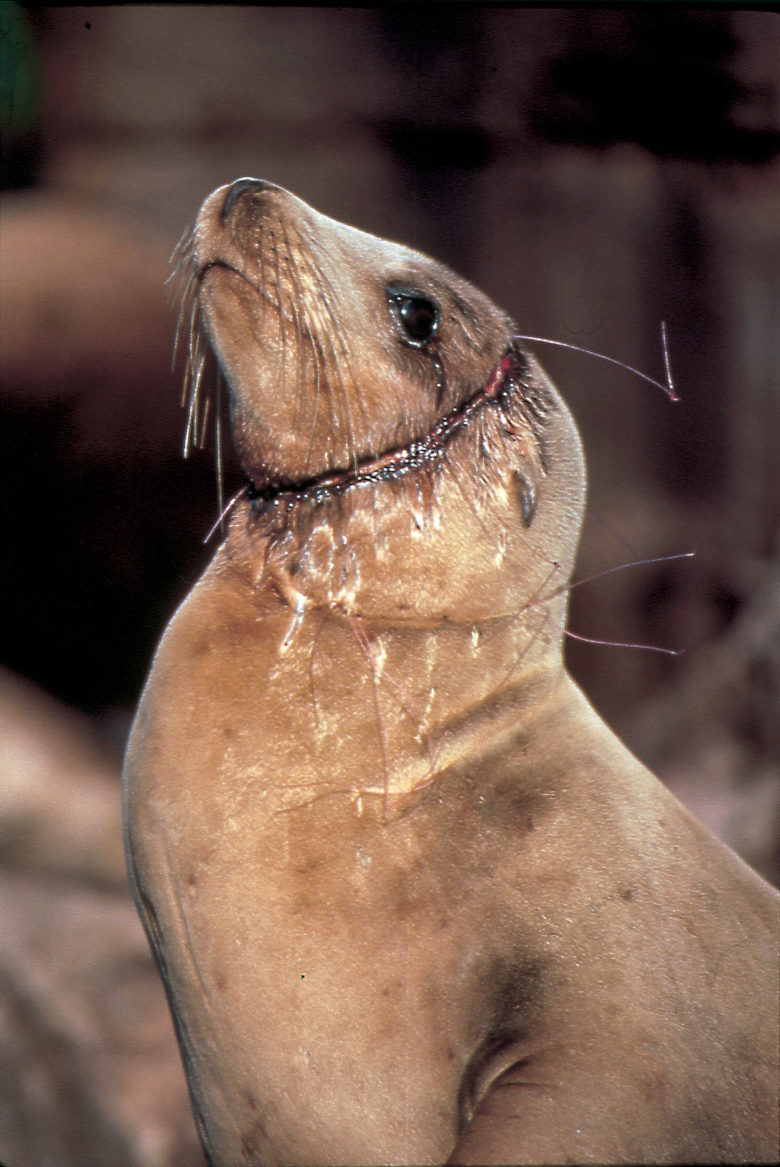Caption: Quote from Marine Photobank-
| “Hundreds of thousands of sea lions and other wildlife become entangled in gillnets and other types of fishing gear each year. This sea lion became entangled in what appears to be a gill net and was cut free rather than removing the monofilament from it neck. However, the monofilament around its head was not removed. As the animal grew the monofilament cut a deep gash into its skin…” |
Credit: Marine Photobank from (c) 1990 Bob Talbot, LegaSea Project
Introduction:
Hello everyone! Sometimes making sustainable and ethical food choices can be really confusing. The fishing industry is so big and there are so many issues wrapped up in it. Over fishing, illegal fishing and accidental catching and killing of untargeted marine species (bycatch) in the process of fishing are just a few. So how do we navigate this sea (pun intended) of issues? It seems like the only way to ensure the fish we are eating are sustainable is to go out there and catch it ourselves! Now I know you don’t got time for that. Neither do I. So I’m writing a series of posts on fishing to make identifying sustainable fish crystal clear. The first post is about the different types of fishing and their impact on marine life. Most importantly we will be highlighting which methods are sustainable fishing techniques. It’s good to know what to avoid, but even better to know who to support and what is safe to buy!
In This Post You Will Learn:
- What is sustainable fishing?
- Which types of fishing are considered sustainable fishing methods?
- Why is it important to support sustainable fishing methods?
- Who is the MSC and what is MSC certified?
- Who is Seafood Watch?
Fish speak: (Definitions)
Just a few definitions to make reading this post seamless!
- Fisheries: An area in the water where fish are fished
- Bycatch: Species of marine life unintentionally caught by fishermen
- Juvenile: Young fish not of reproductive age yet
- Forage Fish: Fish reared or caught to be used as bait
What is Sustainable Fishing and Why is it Important?
Sustainable fishing practices guarantee they can be done indefinitely without reducing the targeted marine species ability to repopulating at a healthy, natural rate. And also without adversely effecting other species within the ecosystem by accidentally harming or killing them, removing their food source or hurting the environment in which they live in. This includes humans who rely on fish for a food source and the ocean for transportation of goods, oxygen and recreation. Oh wait… that’s everyone! When we do not use sustainable fishing practices we risk destroying ecosystems on which we depend on literally for survival, but we will cover more of that in subsequent posts! So why is sustainable fishing important? Because without it we will drive the species we have come to enjoy to extinction. And we are a lot closer with many popular species than you’d think! (More on that later too. I don’t want this post to turn into an insanely long essay!)
The Marine Stewardship Council (MSC):
The Marine Stewardship Council is the largest international non-profit third party certifier of sustainable, wild fisheries. You can find MSC certified fish at many markets.
Just look for this label on the packaging:
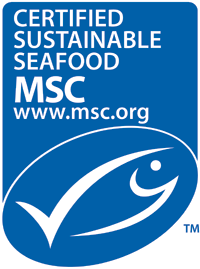
Note: In reading MSC’s website I want to mention that I saw them often write that fishermen are “often” required to do certain things, or they “may” have adapted x,y,z precaution.
The process: MSC auditing parties look at 31 different questions when assessing a fishery. A fishery cannot score lower than 60 (out of 100) on any given requirement, and furthermore must average at least 80 to qualify. During certification fisheries have 5 years to achieve a score of 80 in all categories, and are audited yearly. MSC certifies fisheries who are not at perfect 100s across the board, because they want to encourage fisheries who are working towards change and reward them for that effort. Any fishery who is meeting the standards to become certified may not be perfect, but they are certainly making a significant impact on environment sustainability. Which means long term protection of fish supply, fishing jobs, and marine ecosystems.
Positives:
- Community is encouraged to partake in the approval of fisheries and are free to voice concerns.
- The MSC also seems concerned with constantly improving and narrowing/ specifying their certification requirements.
- They are a non-profit organization.
Possible concerns:
- They have certifications for almost all fish of any size and any fishing method. Some methods, although there are steps to make them less devastating to the environment are naturally more destructive. Even with precautions they still have greater damage than other methods. If everyone with fishing equipment was responsible, this might not be a big issue, but unfortunately illegal, unregulated fishing is a big problem in the ocean. In the wrong hands these inherently destructive methods can do severe damage to ocean ecosystems in a short amount of time. If instead it was illegal to possess something inherently destructive (like a bottom trawler) it might be easier to stop illegal fishing. Fishermen have to DOCK AT A PORT? at some point and wouldn’t want to be caught with illegal equipment, plus the equipment would be harder to get a hold of if illegal.
- The MSC allows for many entities to be stakeholders. “Fisheries Certification Requirements:… ‘To provide the transparency that is required of an international certification scheme for it to have credibility with potential stakeholders, including governments, international governmental bodies (e.g., regulatory bodies, fishery managers), CABs (conformity assessment bodies), suppliers of fish and fish products, non-governmental organisations and consumers’ “. It is a possibility that anyone who stands to make money off of lax certification requirements… governments, fishermen, suppliers of fish products… could have a conflict of interest.
- Through the MSC certification program fisheries get to pick and hire the auditing third party that evaluates them. Although the CAB (auditing third party) has guidelines they must follow this still seems to open up the possibility of more conflicts of interest.
Overall, I do not think the MSC is perfect, but if you do not have the opportunity to know your fisherman first hand than looking to buy MSC certified is a good place to be. They are a large, trusted, international body, and I think their heart is in the right place! They do incredible work to protect our oceans.
However, nothing beats going to the local fish market, wharf or farmers’ market to meet your fisherman. It’s much easier to ask questions that way. Non-commercial fisherman are also less likely to be using the large scale, particularly harmful fishing methods anyway. Yay for sustainable fishing!
Seafood Watch:
“The Monterey Bay Aquarium’s Seafood Watch program helps consumers and businesses choose seafood that’s fished or farmed in ways that protect sea life and habitats, now and for future generations. Their recommendations indicate which seafood items are “Best Choices” or “Good Alternatives,” and which ones you should “Avoid.” ” They are not a certification program, rather they direct people to fish that can be trusted and are certified by others. (Kind of like what I do!) They have a really handy app called Seafood Watch that helps with making sustainable choices while you are out and about. I highly recommend using it in tandem with the resources on Get Cultured Kitchen, which get a little more into the “behind the scenes” of what sustainability means.
Bottom Trawling- Verdict? BAD
Definition: Bottom Trawlers are cone shaped nets with weights that are dragged by boats. The least discriminatory type of fishing, bottom trawlers scrape along the ocean floor sweeping up coral reefs and rock gardens where fish nest and hide from predators. Coral reefs take decades to rebuild themselves. (Margot L. Stiles, Julie Stockbridge, Michelle Lande, Michael F. Hirshfield May 2010)
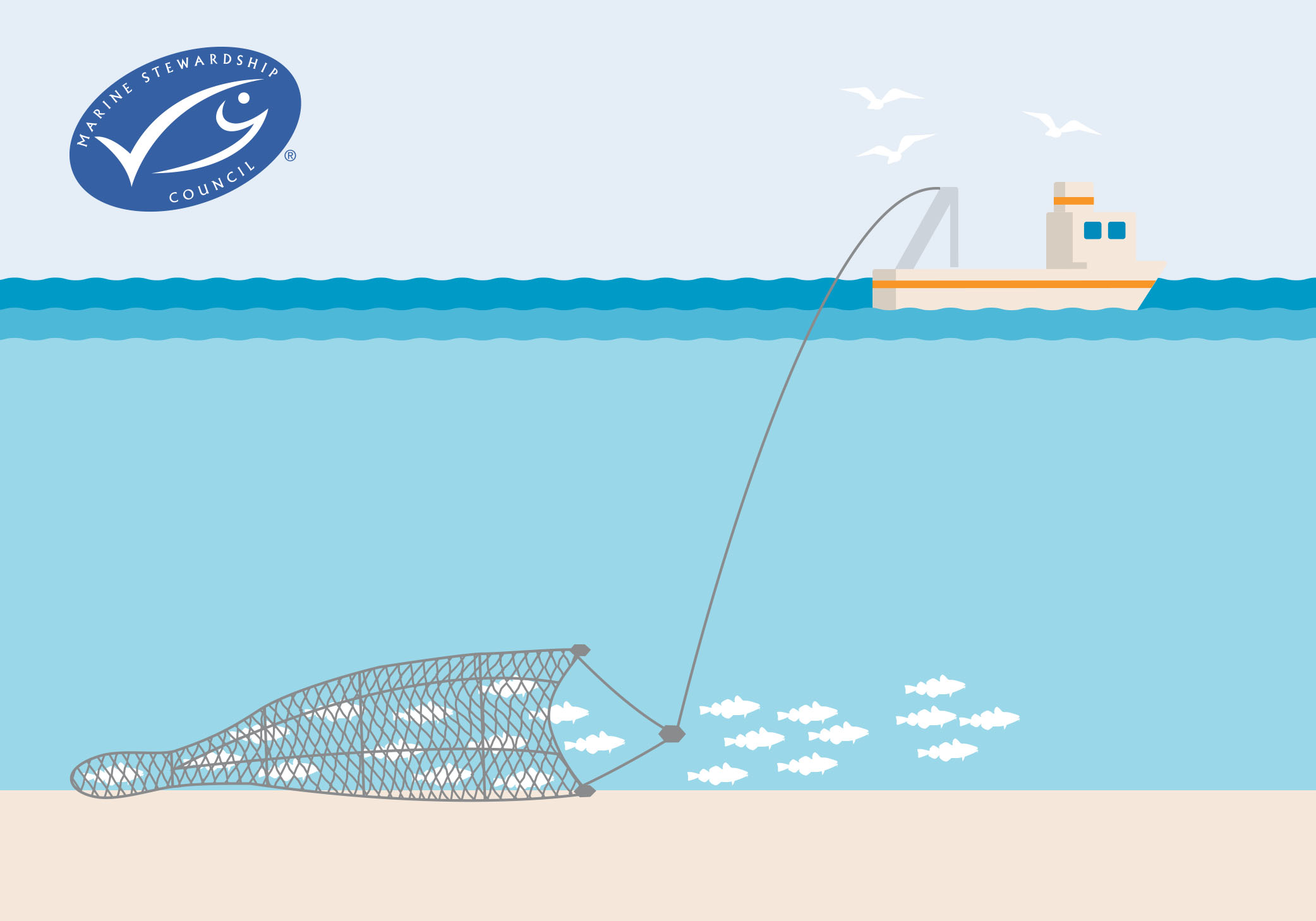
Credit: Marine Stewardship Council
- They are often used to catch shrimp so the netting is tiny and leaves little chance of bycatch to escape. (Margot L. Stiles, Julie Stockbridge, Michelle Lande, Michael F. Hirshfield May 2010)
- Bycatch is usually juveniles of species commonly fished along with seabirds, turtles, sharks, rays, marine mammals and many other aquatic species. Bottom trawling catches significantly more bycatch than intended catch. “In the Gulf of Mexico, scientists estimate that for every pound of shrimp caught, between four and ten pounds of marine resources are thrown away, although the World Wide Fund for Nature estimates in all bottom trawling about 40% is bycatch on average. (Harrington et al. 2005, Nance and Scott-Denton 1997, Alverson et al. 1994) (Margot L. Stiles, Julie Stockbridge, Michelle Lande, Michael F. Hirshfield May 2010)
- There are ways to bottom trawl fish that are a little less destructive. Keeping the net just above the ocean floor prevents some of the coral reef destruction. Gear such as “rock hoppers” (rubber discs on the bottom of the net) can reduce how much of the net comes into contact with the ocean floor. The ocean is mapped and monitored so sensitive areas with endangered species can be protected, and bottom trawling can be avoided during spawning season. However, it is still important to push for the illegalization of bottom trawling. Much of the ocean is not “owned” by any country and therefore it is difficult to police the deep sea. Even a few illegal fisherman can do massive damage if using a bottom trawling net, which is an inherently destructive form of fishing. It is much more difficult to make sure fisherman are staying out of marine protected areas, (or even what area needs to be protected) when you get out into the deep sea. Many deep sea fish are slow growing and late to mature/ reproduce so their populations can’t handle the pressures of fishing, let alone heavy fishing. Making the manufacturing of bottom trawls illegal would be a big step in fighting illegal fishing. (Margot L. Stiles, Julie Stockbridge, Michelle Lande, Michael F. Hirshfield May 2010)
-
“Bans on Bottom Trawling: Bottom trawling has been banned in many different locations worldwide. Indonesia- The government of Indonesia banned bottom trawling to increase catches and income for local fishermen and to end conflicts with industrial trawlers. (JALA) Florida, Georgia, North Carolina, and South Carolina (US)- The South Atlantic Fishery Management Council banned bottom trawling in 23,000 square miles of rare deep-sea corals from North Carolina to Florida. This ban followed the destruction of more than 90% of a nearby bank of Oculina corals by trawling. California, Oregon, Washington, Alaska (US)- The Pacific and North Pacific Fishery Management Councils banned bottom trawling in more than 840,000 square miles of seafloor in the Pacific, Bering Sea, and the Arctic. The state of California banned bottom trawling for spot prawns to reduce discards and increase prawn catches for fishermen using more selective gear. Hawaii and Pacific Islands (US)- The Western Pacific Fishery Management council banned bottom trawling in 1.5 million square miles around Hawaii and other Pacific islands in US waters. Bottom trawling is also banned in more than 330,000 square miles of the Pacific islands from Samoa to the Mariana Trench which are protected as a National Monument. Azores, Madeira, and Canary Islands Bottom trawling is banned in more than 500,000 square miles of Atlantic waters surrounding the Canary Islands, Madeira, and the Azores. New Zealand The New Zealand government banned bottom trawling in large areas of seamounts and hydrothermal vents. Mediterranean (Europe and North Africa) The General Fisheries Commission for the Mediterranean banned bottom trawling in approximately 630,000 square miles of deep sea waters.” (Margot L. Stiles, Julie Stockbridge, Michelle Lande, Michael F. Hirshfield May 2010)
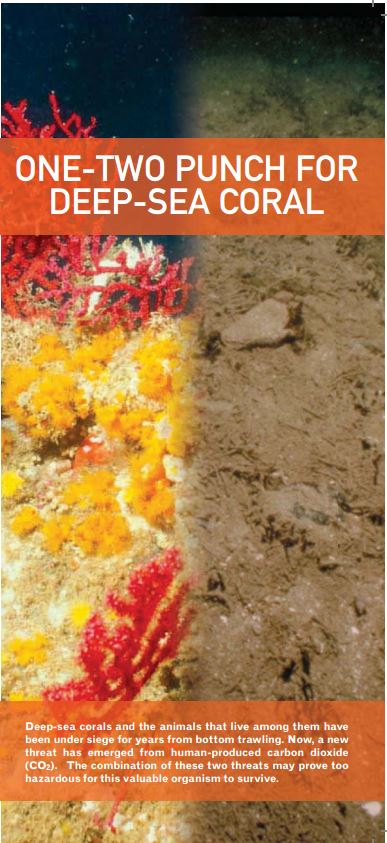
Credit: NOAA
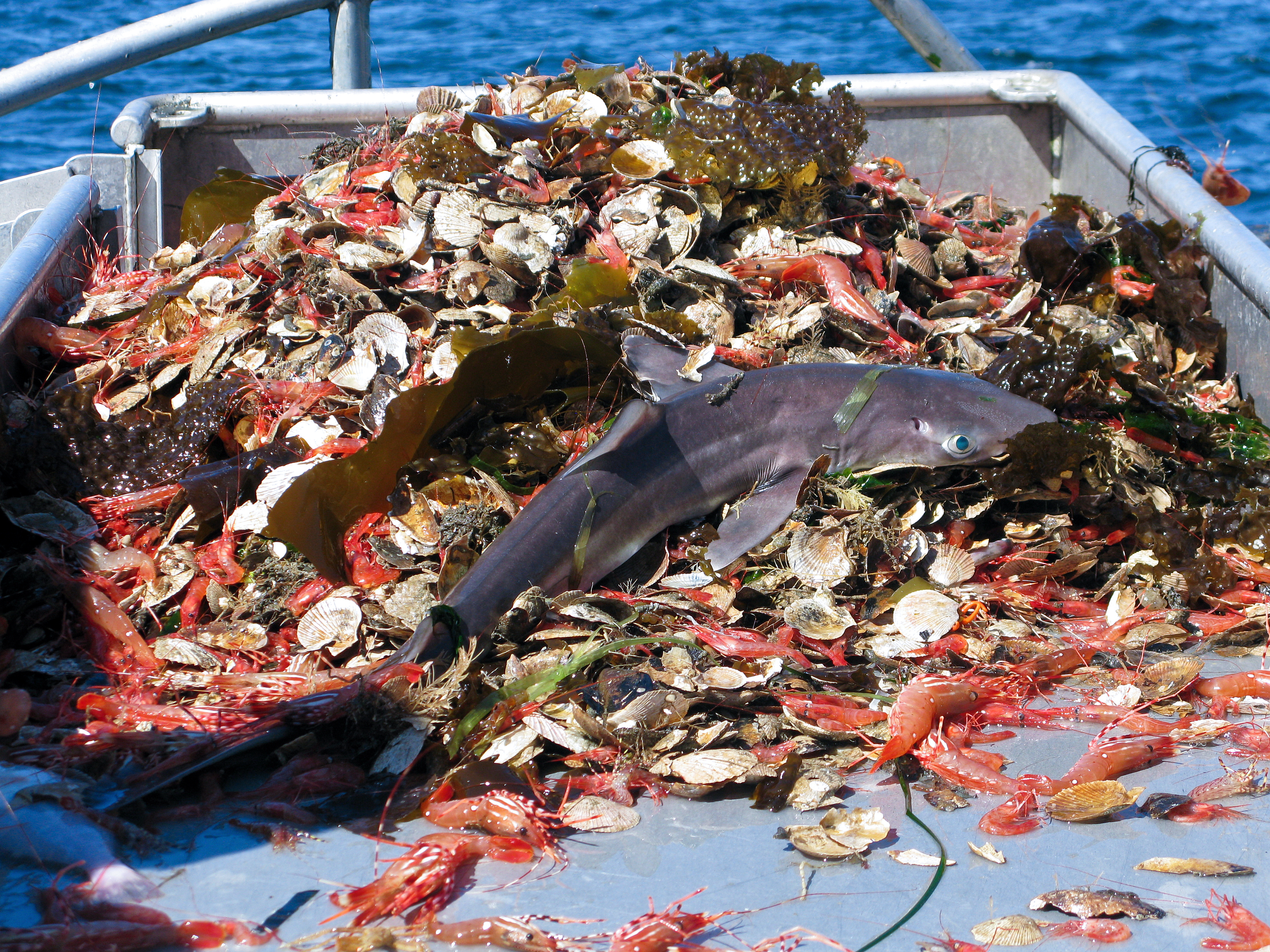
Credit: Andreas Altenburger
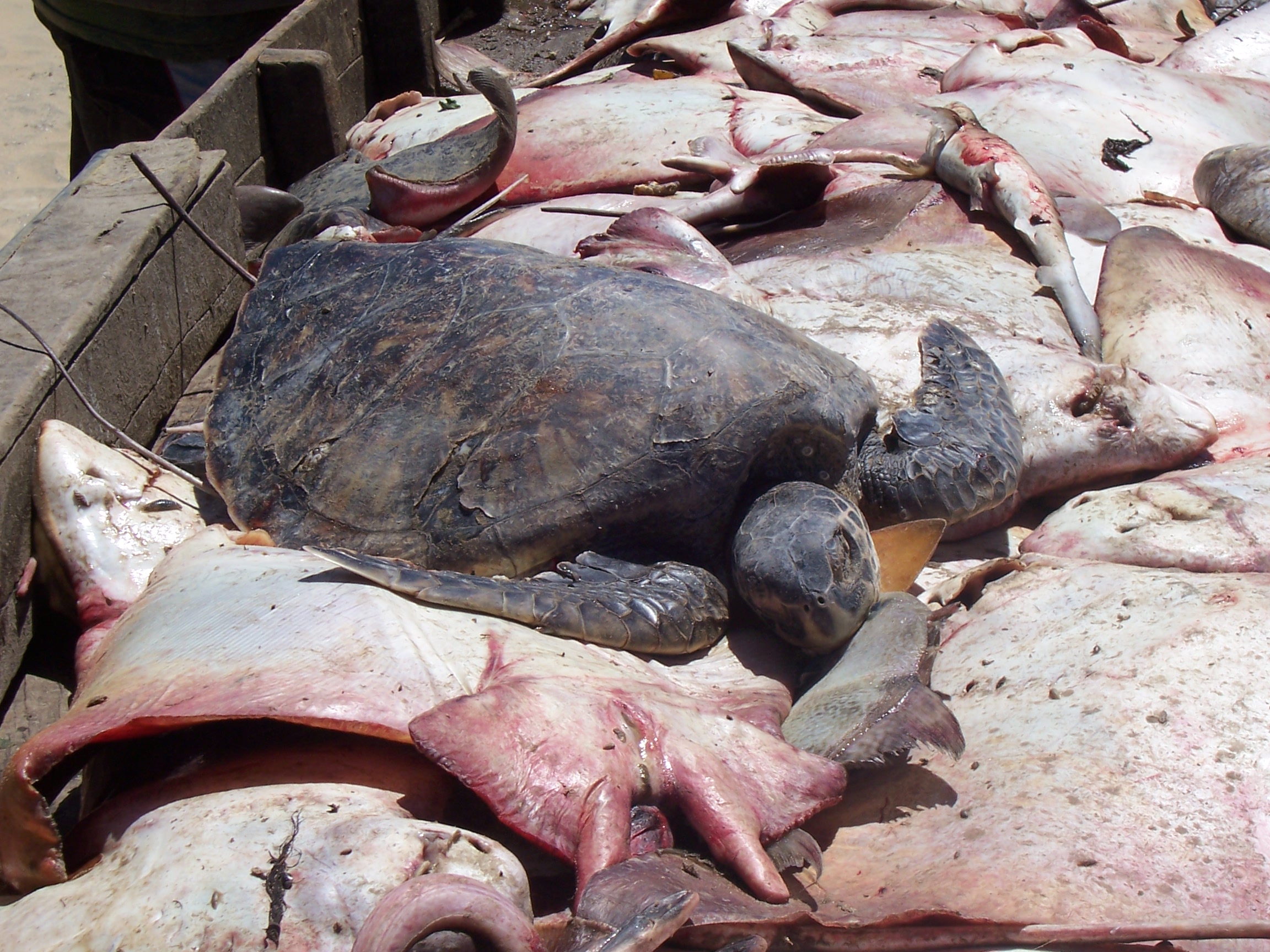
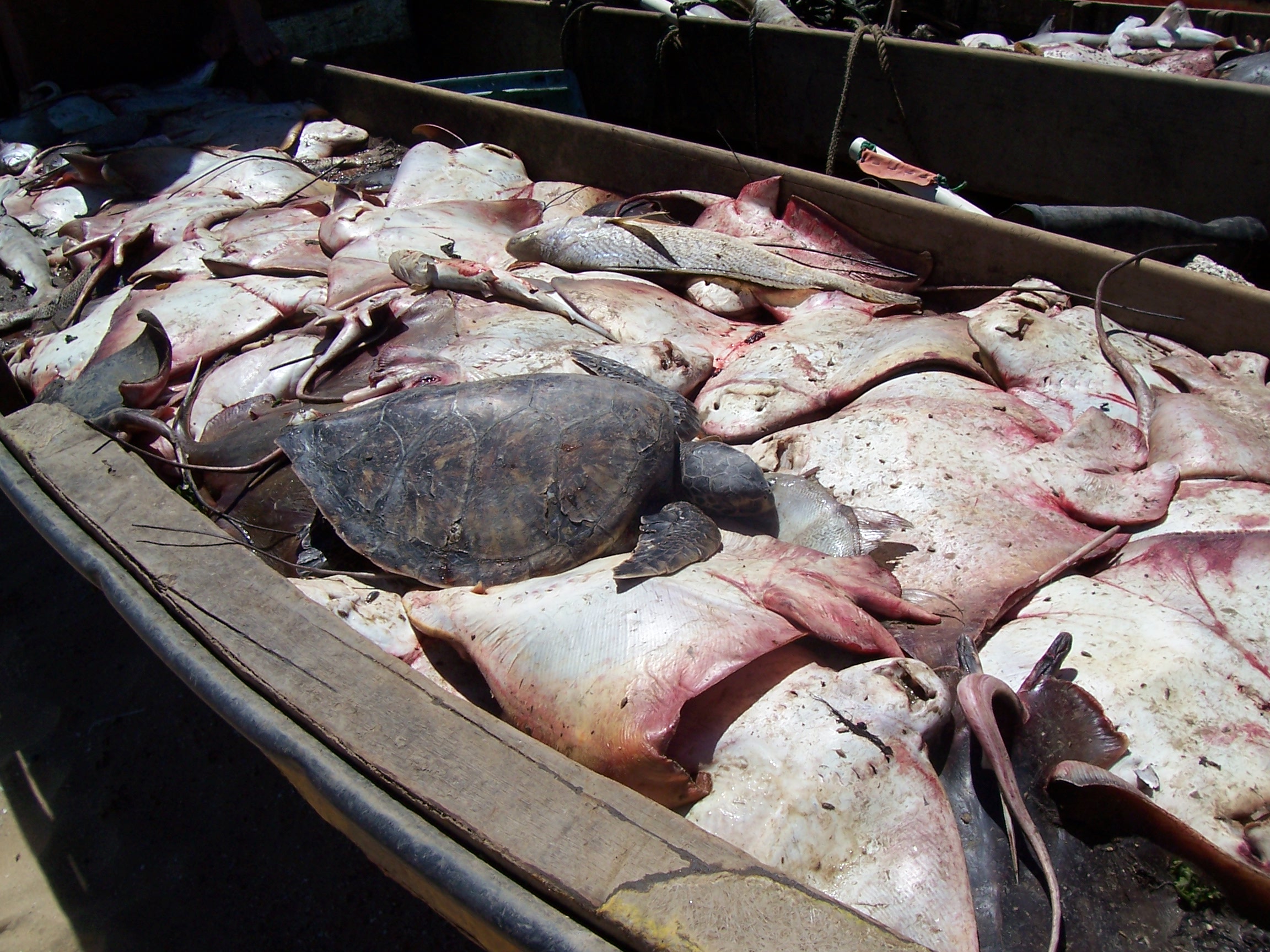
Credit: Phillip Miller
-
Fish often caught using bottom trawling: Shrimp *Please be wary when thinking of buying shrimp at the market or a restaurant*
Gillnets- Verdict? BAD
*This information was taken from the National Oceanic and Atmospheric Administration and the Marine Stewardship Council*
Definition: Gillnets are a wall of netting that hangs in the water and catches fish by getting them entangled in the holes. They are designed so that a fish can get it’s head, but not it’s whole body through the hole. When they try to back out their gills will get caught in the net.
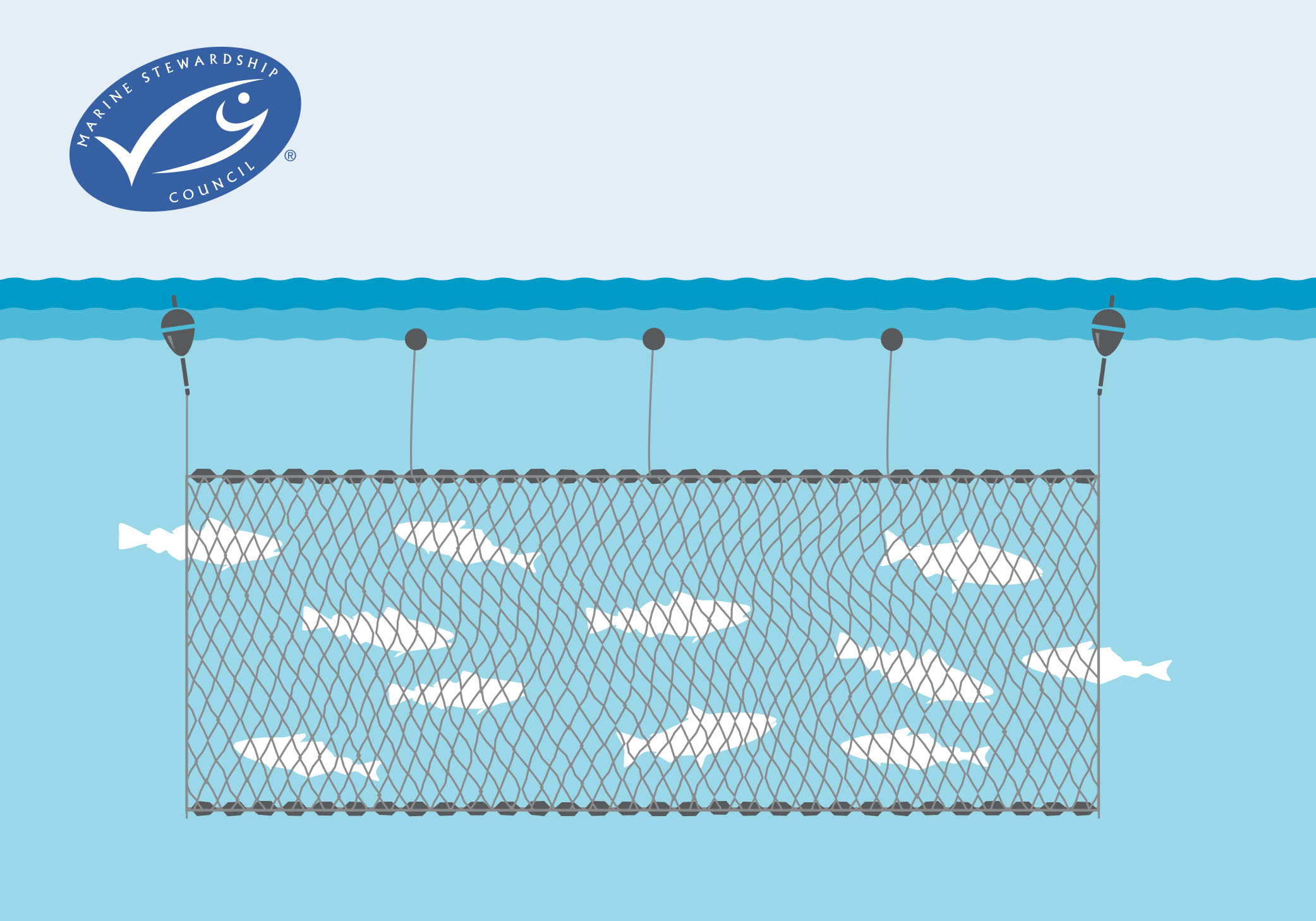
Credit: Marine Stewardship Council
- There are two main types of gillnets. One, set gillnets, are set in place by poles and one, drift gillnets, are kept in place often by buoys. Both pose different problems to marine species.
- Gillnets have minimal seabed interaction, but are still a big source of bycatch. Depending on the type of fish caught the fishermen can use different mesh sizes, reducing the risk of catching juvenile (young) bycatch. However, even with using specifc mesh sizes and targeting specific areas in the ocean, bycatch is still an issue with gillnets.
- Turtles can easily get their head or flippers entangled in the nets. This is bad news for the innocent turtle, because if they get stuck and cannot come up for air they will drown. The mesh can also cut into their flesh causing bleeding, infections and sometimes loss of limbs, which will obviously effect their ability to feed, swim and live naturally.
- Marine mammals such as dolphins, sharks, porpoise, whales and sea lions also face getting entangled in the nets. If it is a stationary gillnet they will drown and if it is a drift gillnet the will drag it along with them for miles, entangled, fatigued and inhibited.
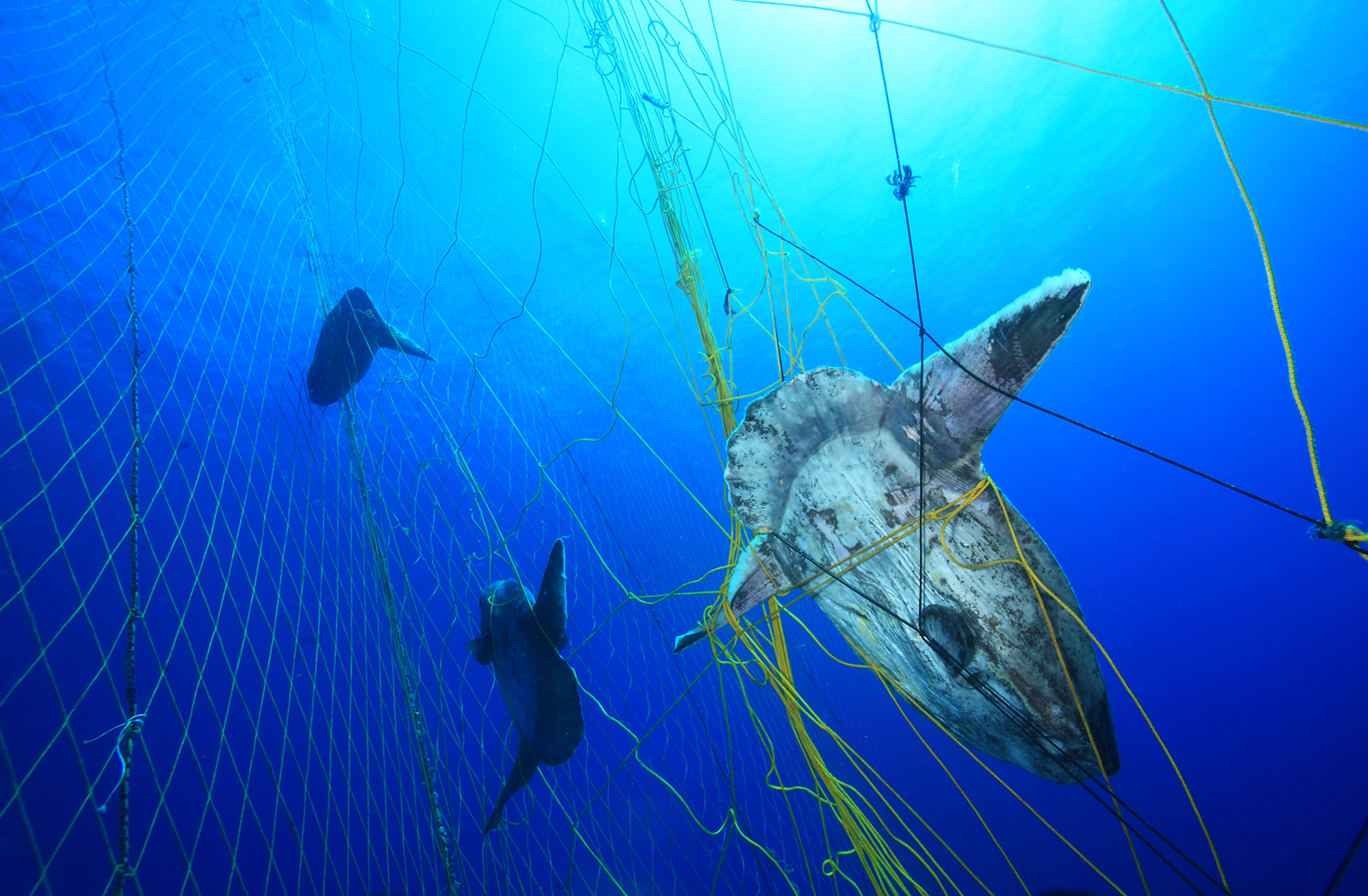
Credit: Alessio Viora/ Marine Photobank
- In order to be MSC certified, gillnet fisheries are often required to make improvements, which include increased monitoring and independent observer coverage.
- A few things are being done to reduce bycatch such as adding breakaway panels in the net, changing the net’s slack, mesh size and depth. Pingers, an alarm attached to the nets that warn marine mammals to stay away, are also required in California and Maine through New Jersey. Prohibition on large mesh gillnets helps reduce bycatch as well as closure of fisheries during spawning and other specified times and putting weak links into gillnets to allow marine mammals to break loose. However, even with these precautions gillnetting is not the most sustainable way to catch fish. Fish may be entangled and suffering for a very long time compared to hook and line fishing, and bycatch is still a big risk.
Longlines- Verdict? BAD
Definition: Longlines are made up of long fishing poles (main lines) with a second line beneath it. The second line is clipped onto the main line at intervals and has several baited hooks on it. Depending on the fishery the longline can have up to 3,000 hooks on it and be 150 km long.
- Many longline fishing operations may transfer some of their catch to another boat while still out at sea, resulting in a lot of unreported, over-fishing and illegal fishing.
- Baiting the hooks and throwing them out can take up to 5 or 6 hours with no breaks for workers. Then the line will “soak” and wait for fish to bite for 3-4 hours and then it takes another 5 to 6 hours to bring the catch in. Not only are workers being treated in inhumane ways, but the fish may be stuck caught on the line for hours.
- Bycatch is still a big issue, particularly with catching seabirds, turtles and sharks. Weights that cause long lines to sink more quickly, and tori-lines- lines that drop from a higher point from the boat that scare away seabirds can be used. Special regulations with depth of the lines, time they are cast and areas in which they are cast also play a factor in protecting endangered, threatened and protected (ETP) species. Turtles and sharks are slow to mature and reproduce so becoming bycatch really puts their respective species at risk. Circle hooks protect these species from getting caught. When going out to buy fish it is unlikely that you will be able to gather much information about what precautions were made, unless your state law requires certain precautions and the fish is from your state. Overall if you see fish for sale and you are able to find out it was caught by longline, I would be wary.
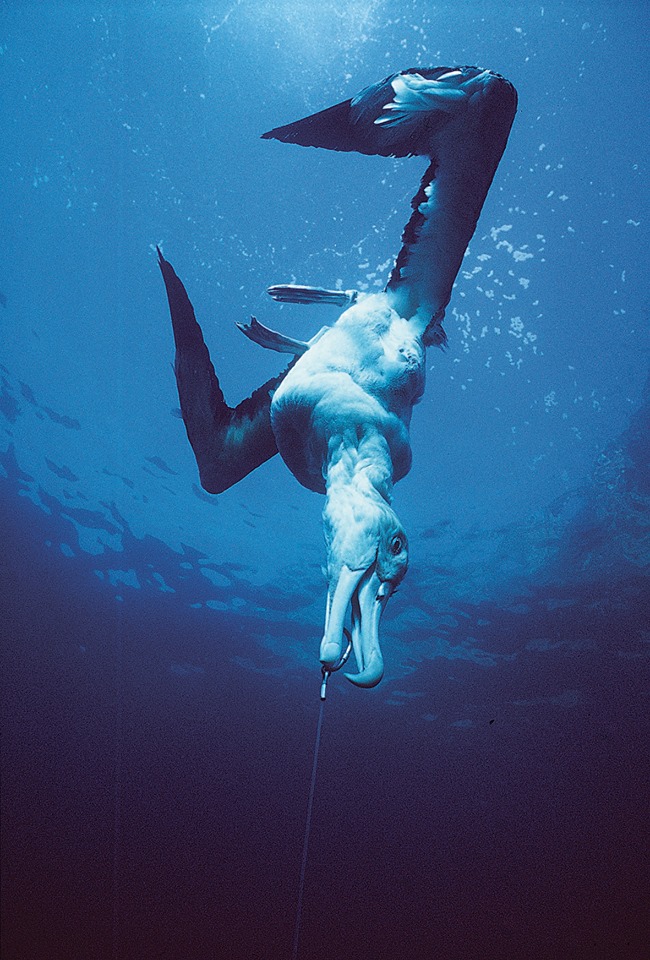
Credit: Dr. Graham Robertson
- Below is an infographic highlighting the issues with tuna longline fishing.
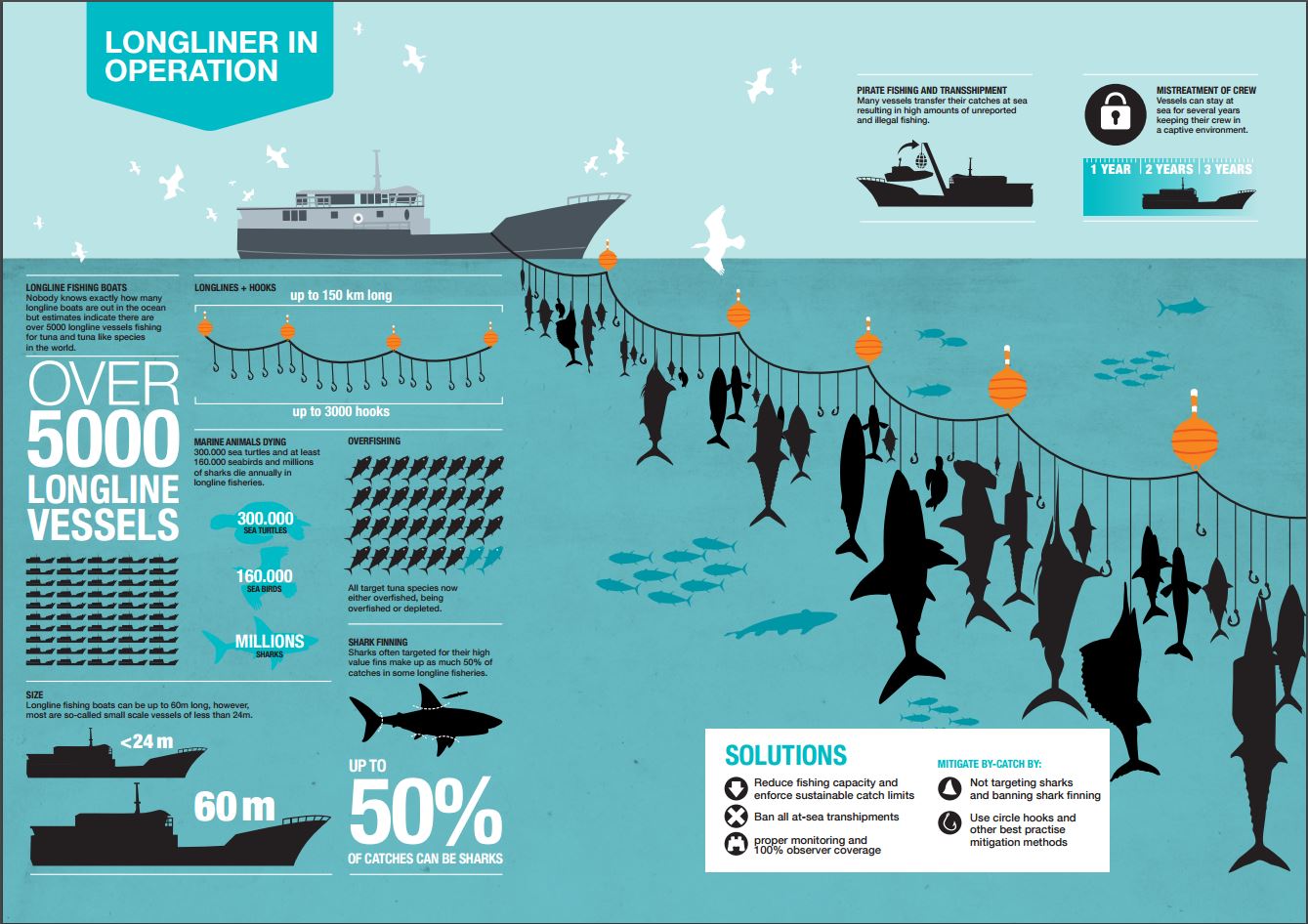
Credit: GreenPeace (GPI-LonglineInfographic-RGB-DEF)
Blast Fishing- Verdict? BAD
Definition: “Blast fishing or dynamite fishing is the practice of using explosives to stun or kill schools of fish for easy collection. This often illegal practice can be extremely destructive to the surrounding ecosystem, as the explosion often destroys the underlying habitat (such as coral reefs) that supports the fish.” Find pictures in marine photobank
- Blast fishing is largely illegal worldwide, but is still practiced in some impoverished countries where regulating is difficult, explosives are available and people are desperate.
- Blast fishing kills many more fish than can be harvested. Fish litter the waves dead or struggling to stay alive. Many fish sink back to the bottom of the ocean floor, their air bladders, responsible for buoyancy, ruptured. Often times fish are obliterated by the dynamite, along with the coral reef.
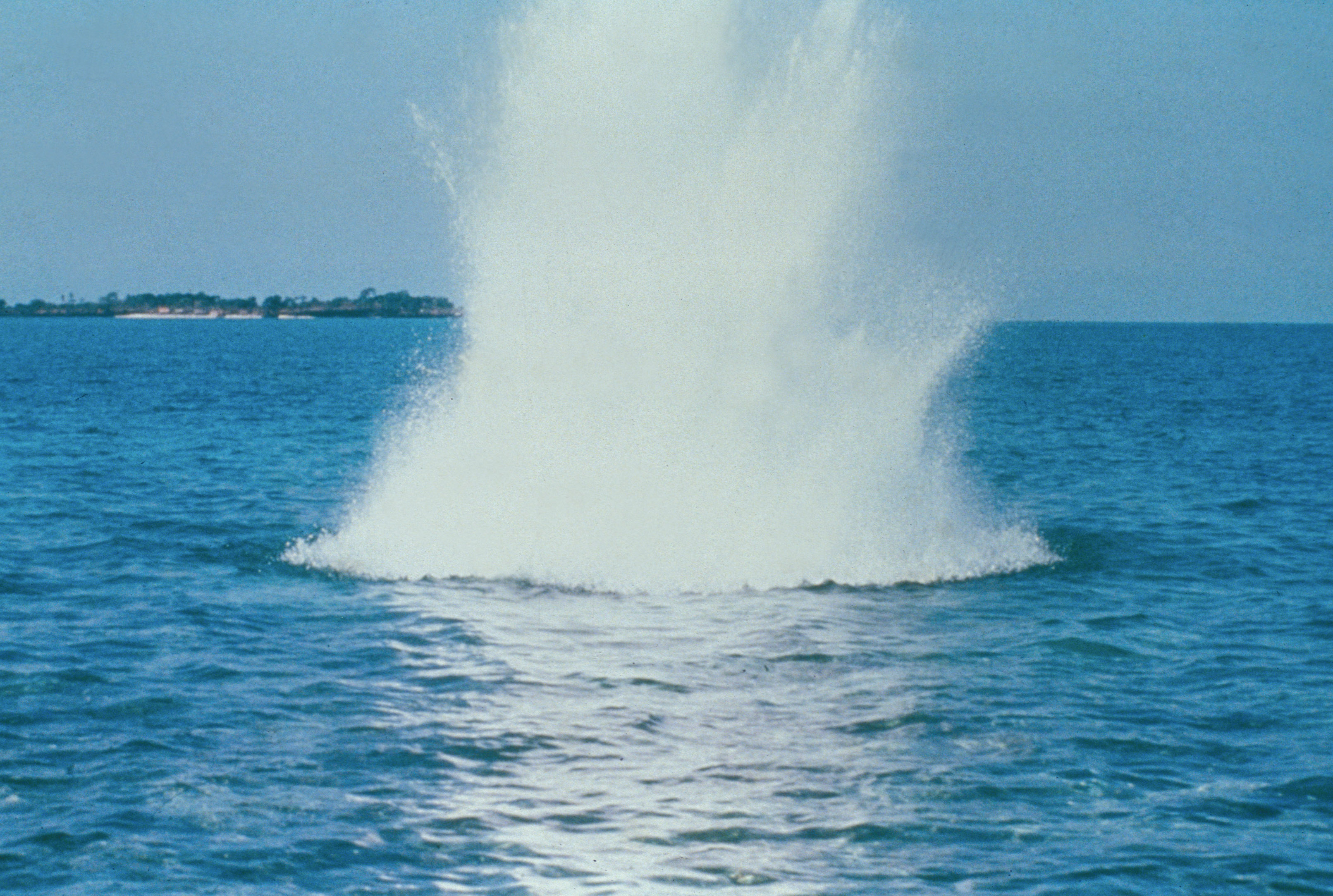
Credit: (c) Wolcott Henry 2005/Marine Photobank
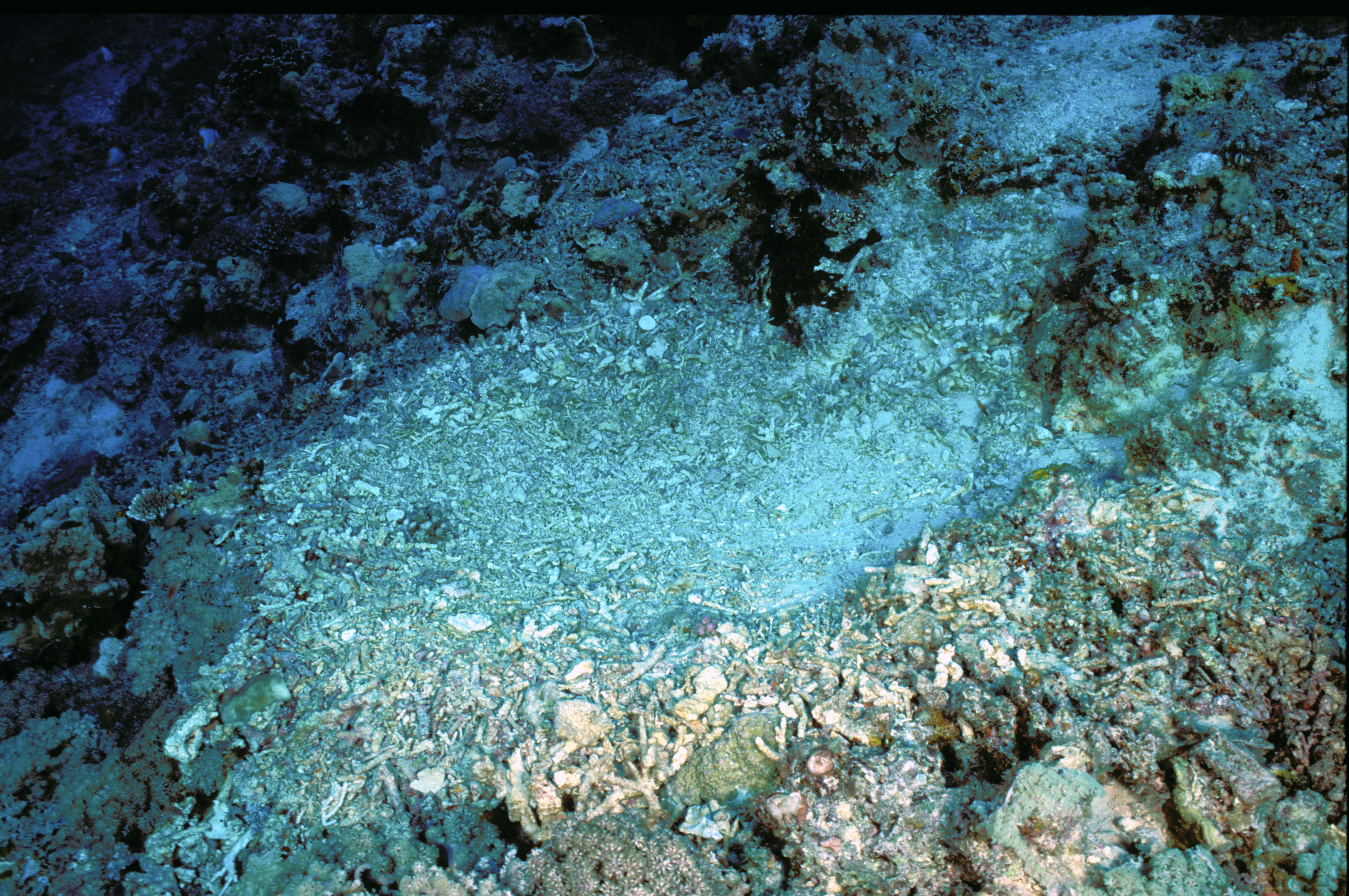
Credit: (c) Wolcott Henry 2005/Marine Photobank
Cyanide Fishing- Verdict? BAD
Definition: “Cyanide fishing, whereby divers crush cyanide tablets into plastic squirt bottles of sea water and puff the solution to stun and capture live coral reef fish, is widely practiced throughout Southeast Asia despite being illegal in most countries of the region. The practice began in the 1960s in the Philippines as a way to capture live reef fish for sale primarily to European and North American aquarium owners—a market now worth some $200 million a year.”
- Cyanide is used to target select fish for consumption in some Southeast Asian restaurants, but more often it is used to catch wild salt water fish for aquariums.
- There are complaints of fish being caught with cyanide developing cancer within a year.
- Despite being illegal in most countries, cyanide caught fish is a common occurrence.
- The cyanide left in the water destroys coral reefs and effects the fish that depend on those reefs for survival. It also stuns all fish in the surrounding areas when sprayed in the water.
- Look for tank-raised fish when purchasing fish for an aquarium. They will most likely be healthier and better suited for domesticated life.
- The jury is still out on how dangerous it is to eat cyanide caught fish. The amounts in the fish are usually trace, but someone who eats a lot of cyanide caught fish in their diet are at risk of getting sick. Pregnant women, the elderly and children should be especially wary of cyanide fishing.
Purse Seine- Verdict? OKAY
Definition: Purse seines are used to catch schools of single-species fish like tuna and mackerel. A vertical net is used to surround the fish and then the bottom is drawn together to form a net around the school.
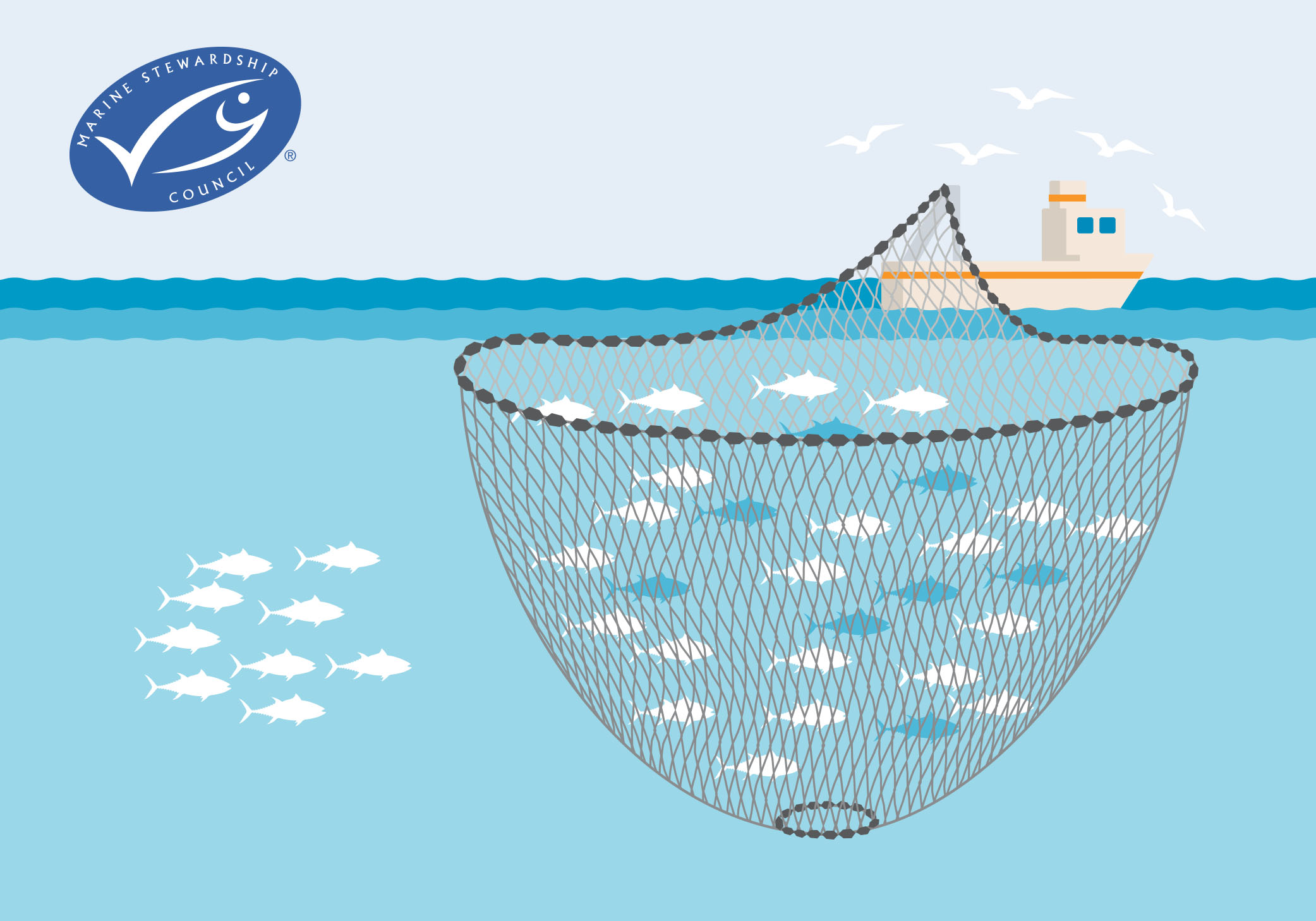
Image from msc.org
- Purse seine fishing is in open water so it has no contact with the ocean floor. The main issue is catching too many juvenile fish of a species, but fisherman can specifically target schools of adult fish and make sure the mesh of the net is large enough for juveniles to escape. This is how fisherman ensure that there are enough fish left to reproduce.
- Purse seine fishing is very efficient as it can scoop up an entire school of fish. If there are no regulations on the amount of fish allowed to be caught in that fishery it is easy to over fish. It’s efficiency also make it dangerous in the hands of illegal fishers.
- Another form of purse seines is using them to catch fish congregating around a fish aggregating device. Over 300 species can be drawn in by FADs and so using them has high bycatch issues. *Be wary of this type of purse seine fishing*
- Overall purse seine can be a sustainable fishing method if regulated properly. Look for purse seine caught fish that is also third party certified.
Pole and Line/ Hook and Line- Verdict? GOOD
Definition: Pole and line fishing is the way you imagine it goes when people fish. Individual fisherman all have fishing poles and can catch one fish at a time. When a school of targeted fish is located a process called chumming will occur where water is sprayed from the back of the boat and several lines of bait fish will be cast out to mimic a school of prey fish.
- Pole and line fishing is one of the most sustainable types of fishing for several reasons. Bycatch can quickly be released from the boat and it is easy to target areas to significantly reduce bycatch. Also, the process is much slower with less fish caught so fish have time to reproduce. It is also more humane, because fish can swiftly be killed as soon as they get on the boat. If you can, look for fish caught this way!
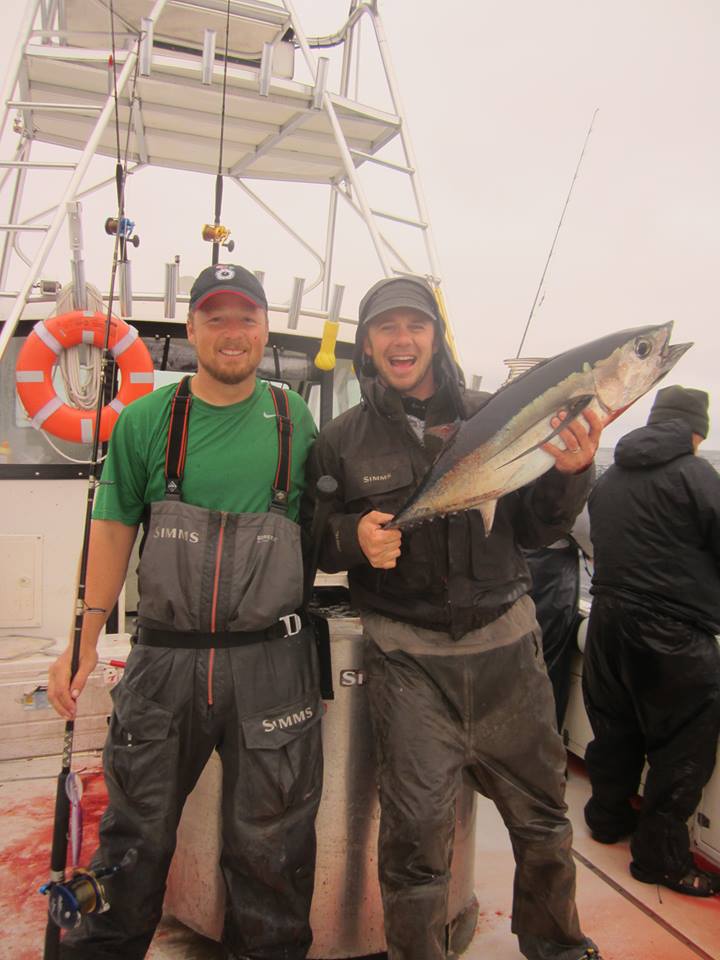
Pots and Traps- Verdict? OKAY to GOOD
Definition: Pots and traps are cage like structures with concave cone like entrances that make it difficult for crustaceans to escape once they enter the cage. Bait is put in the cage to lure in prey. They rest on the bottom of the floor and a string of them are often connected by fishing line.
- Overall pots and traps have a lower impact on ocean ecosystems. Bycatch can often be released back into the ocean since they are only trapped.
- Since they are stationary they often do not interact with the ocean floor much, but in high sea storms they may cause damage to the ocean floor.
- Pots and traps may lure in bycatch, but measures can be taken to reduce this risk. Escape rings can be put in the cages and the mesh of the cage can be big enough to allow small bycatch to escape. Although it is uncommon there are also special openings that can be put on the entrances of traps to deter the wrong species from getting trapped in the first place. In Australia fisherman are encouraged to put a vertical bar across the entrance to stop sea turtles from trying to get in.
- Another issue is whales, turtles and sea lions getting caught in the line or on the lines connecting the pots. Marine mammals and turtles that get entangled will eventually drown if they cannot come up for air. Fisherman can attach weak links to the lines so that they will break away if the force of a large animal hits them. They can also make sure the lines connecting the pots sink to the bottom of the ocean so they are not floating and in the way.
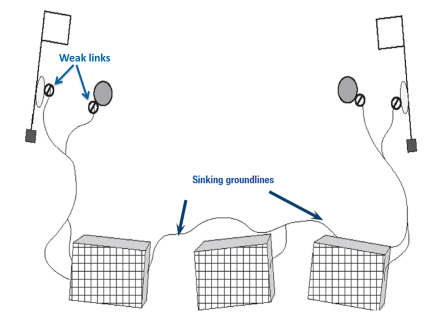 Image credit: NOAA
Image credit: NOAA
- “Forage fish” or the fish used for bait can be over fished and cause real damage to the ocean environments. If forage fish are depleted there are less available for predatory marine species. Fisherman should consider using smaller quantities of forage fish and instead resort to fish parts or artificial bait. To learn more about the issues surrounding forage fish read my interview with sustainable seafood advocate Lyfe Gildersleeve.
- Finally, pots and traps can be lost at sea and continue to unintentionally “ghost fish” trapping sea creatures until they break down. Fisherman can lose anywhere from 10-30% of their gear. To combat this they are now using biodegradable cages. Though an organized effort to retrieve lost traps would be best.
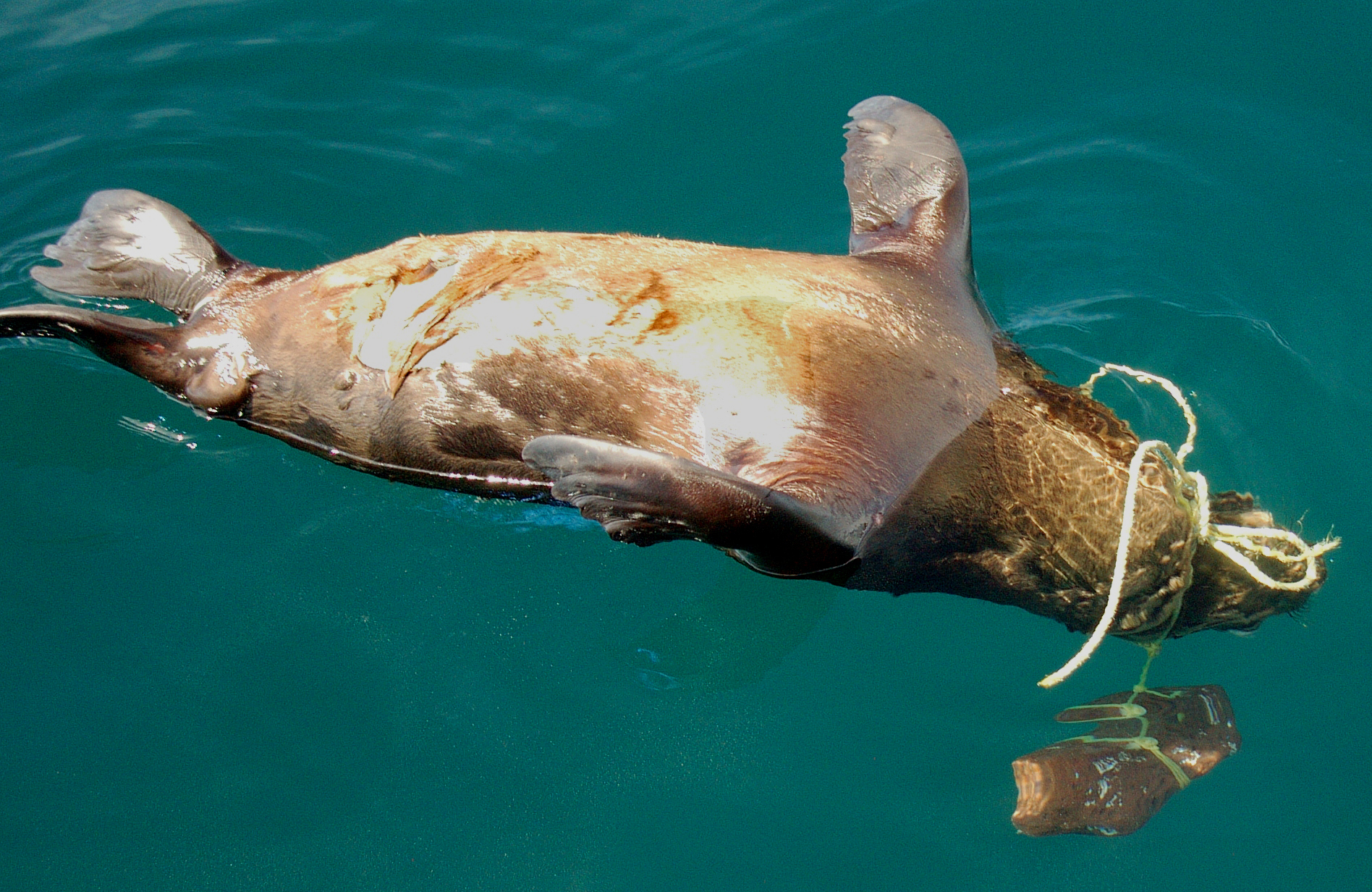
Credit: Nina Kristin Nilsen/Marine Photobank.
Pelagic or Midwater Trawl- Verdict? BAD
Definition: Midwater trawlers are “cone-shaped” nets with wide openings and tapered ends designed to catch midwater fish such as herring and mackerel.
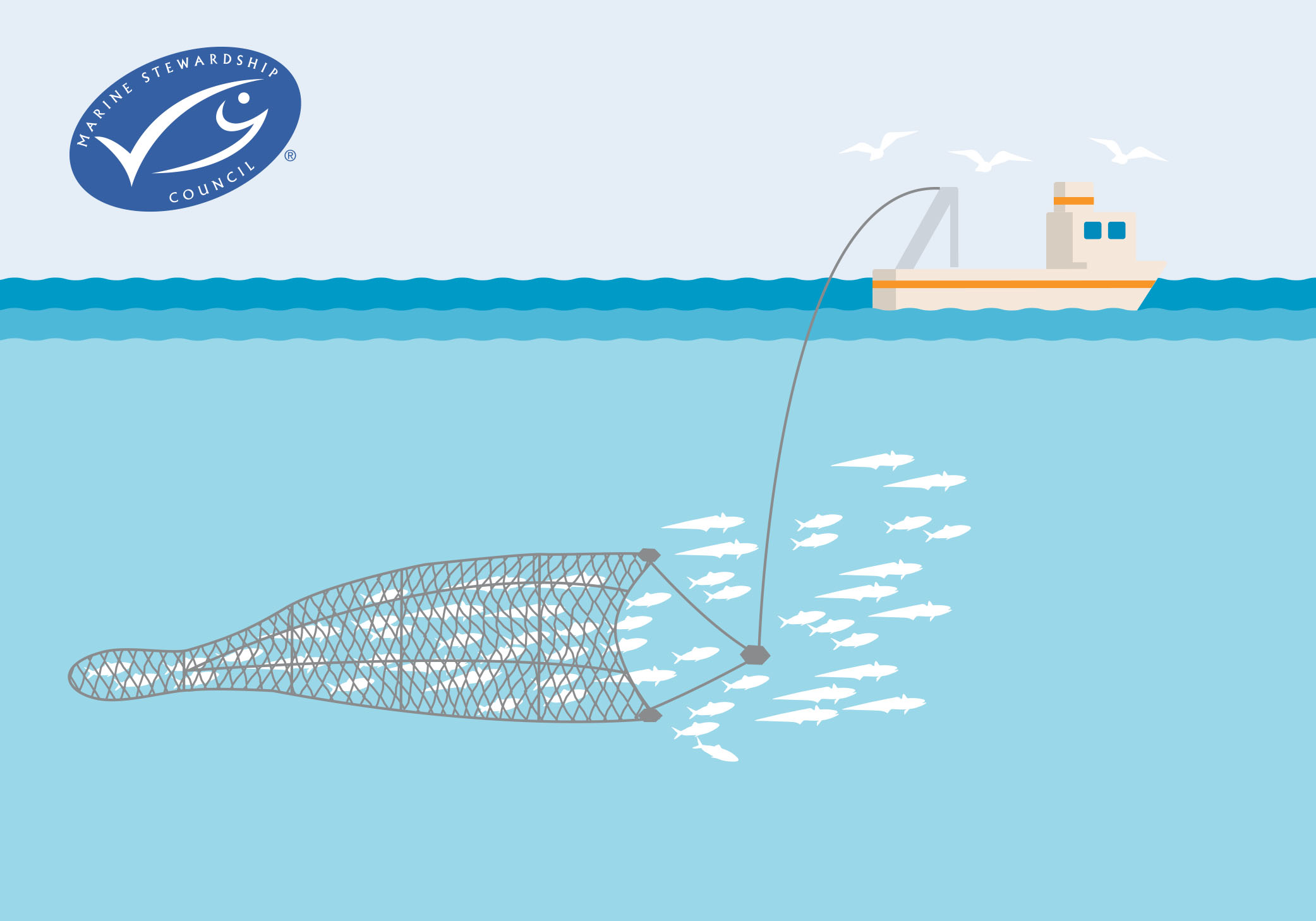
Credit: Marine Stewardship Council
- They tend to be much larger than bottom trawlers and although they do not touch the ocean floor they are still associated with bycatch and catching juvenile fish. https://www.msc.org/healthy-oceans/sustainable-fishing/fishing-methods-and-gear-types/pelagic-midwater-trawls
- Using specific mesh sizes and exclusionary devices such as pingers (defined under gillnets) are used to reduce bycatch such as marine mammals and sea turtles. https://www.msc.org/healthy-oceans/sustainable-fishing/fishing-methods-and-gear-types/pelagic-midwater-trawls
- Sea turtles are at risk of being caught while they swim from the bottom of the ocean (where they feed) to the surface for air. They can drown this way, have their shells or limbs broken by the weight of the catch or suffer serious damage while being dumped onto the deck. Unfortunately, even if they survive the catch turtles are often near death when tossed back in the water. http://www.nmfs.noaa.gov/pr/interactions/gear/midwatertrawl.htmTED’s or Turtle Excluder Devices are used to help ideally any bycatch larger than 10cm to escape. The way a TED works is metal bars are placed midway through the net that turtles are too large to fit through. This way they are unable to swim to and get trapped in the back of the net. Then above or below the bars are openings for bycatch to swim out off, however the openings are often too small for large marine mammals and some larger turtle species. Seaweed and other debris can also block the openings, making it impossible for the turtles to escape. https://en.wikipedia.org/wiki/Turtle_excluder_device
- Many species of marine mammals, particularly species of sharks and dolphins, forage midwater, so they are at high risk of getting caught up in a midwater trawl. Unfortunately, I was unable to find information on what is done to reduce mammalian bycatch. http://www.nmfs.noaa.gov/pr/interactions/gear/midwatertrawl.htm
- Despite all this midwater trawls can actually be very effective. If they are managed carefully and target an adult school of fish they will have very low levels of bycatch. Although, not mentioned anywhere I read I would say one drawback might be just how efficient it can be. Midwater trawling can wipe out an entire school of fish easily, making it easy to over fish that species. Slower types of fishing such as hook and line give fish much more time to “recuperate” by reproducing, because significantly less fish are being removed from the sea at once.
Spear/ Speargun/ Harpoon- Verdict? GOOD
- Definition: You are probably familiar with spear fishing. It is exactly what it sounds like. A spear or harpoon is thrown in the water to spear one fish. A speargun is a mechanism that can propel a spear into the water quickly.
- Spear fishing is sustainable, because only one fish is caught at once and it is easy to target the one fish you intend to catch so bycatch is low.
- A harpoon is used to catch larger fish such as bluefin tuna. Bluefin tuna is a highly prized, highly overfished fish. In America fishermen are only allowed to catch them with a harpoon or hook and line method to allow the bluefin tuna to repopulate.
Dredge- Verdict? OKAY to BAD
Doesn’t it sounds dredge-ful?
Definition: A dredge is a rigid structure that is dragged along the ocean floor to pick up bivalves (oysters, clams, mussels, scallops, etc).
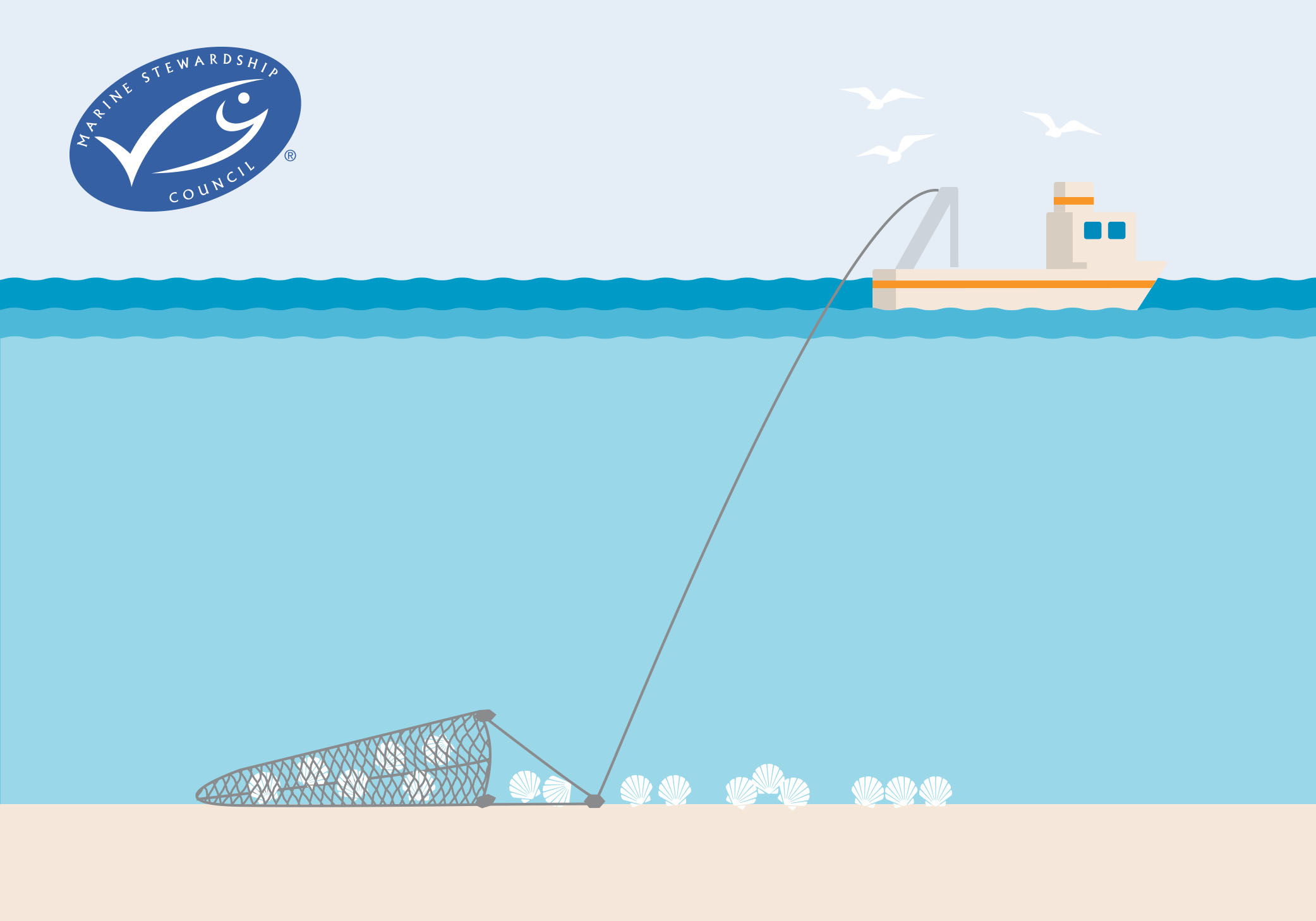
- The location being dredged greatly determines the practices impact on the environment. The dredge breaks up sediment on the seabed that may or may not be supporting a large habitat. If not careful they can have similar effects to bottom trawling on the ocean floor.
- Thankfully controlled mesh size and escape panels make sure bycatch and undersized bivalves will not get caught in the dredge.
- Restrictions on when and where dredging can take place and replacing traditional dredges with lighter ones with boulder exclusion devices have helped control and reduce their impact.
- This is not the only way bivalves can be harvest though! Often times they are farmed in controlled areas and less invasive fishing measures such as tonging (like using a large rake) can be used. Which is good news for us, because bivalves are extremely nutritious!
- FUN FACT: Some scientists do not consider bivalves sentient, because they do not have a brain or Central Nervous System! This means some vegans include them in their diet, particularly oysters which are an excellent source of vitamin B12.
TAKE AWAY:
*ANY FISHING METHOD CAN BE UNSUSTAINABLE IF NOT USED RESPONSIBLY*
There are a lot of questions one should ask before purchasing fish such as where is it from? Is it endangered? Is it wild or farmed? But today we learned about:
HOW WAS IT CAUGHT?
A quick overview:
METHODS TO AVOID: Bottom Trawling, Gillnets, Longlines, Pelagic (Midwater) Trawling, Blast Fishing, Cyanide Fishing
METHODS THAT CAN BE SUSTAINABLE IF USED PROPERLY: Dredge, Pots and Traps, Purse Seine
METHODS THAT ARE GENERALLY SUSTAINABLE: Hook and Line, Spear *Look for these methods first when buying fish!
SO HOW DO I FIND FISH CAUGHT BY HOOK AND LINE OR SPEAR?
KNOW YOUR FISHERMAN!!! If you have a local fish market or farmers’ market, chances are you have access to local fish or at least someone who is knowledgeable about whether sustainable fishing methods were used. Plus, a small vendor is much less likely to be using commercial scale fishing methods, which do the most damage in our oceans. Like everything else: Keep it small and keep it local.
WHAT IF I DON’T HAVE ACCESS TO A LOCAL FISHERMAN?
If you do not have a local fish provider the best option is to abstain from fish, but I know that most people aren’t willing to do that. (And I totally get it!) So the next best step is to
-
- Buy wild caught, hook and line fish online. Unfortunately, your fish may have to travel farther to get to you, but so did the grocery store fish and at least you are voting with your dollar towards a place that is using sustainable practices. Here are a couple of exceptional online distributors
- Vital Choice – Vital Choice is a sustainable seafood distributor who is committed to protecting and managing our oceans. They are very transparent about their products. They tell you were their fish came from, who certified it, how it was caught (usually hook and line), and how it maintains it’s freshness (usually flash frozen which is the freshest next to eating it right off the boat!) They can even ship live bivalves (oysters, clams, etc) right to your doorstep. You don’t have to live on the coast anymore to have access to extremely fresh fish in the United States!
- Alaska Gold Seafood –Alaska Gold Seafood is a “seafood producers cooperative” meaning it is a collection of Alaskan fisherman that all meet the cooperatives strict sustainability requirements. All fish is hook and line caught and there are little bios about each seafood producer so you can really get to know your fisherman! Plus they have Loyalty Program to save you money. Pretty sweet deal.
- Buy wild caught, hook and line fish online. Unfortunately, your fish may have to travel farther to get to you, but so did the grocery store fish and at least you are voting with your dollar towards a place that is using sustainable practices. Here are a couple of exceptional online distributors
- Look for Marine Stewardship Council certified fish at the grocery store (look for a blue check on the package). Can be found all over… even at Target!
- Download the Seafood Watch App!
Next in series: What fish species are safe to eat and which ones are better avoided?
*Disclaimer: This post contains affiliate links for businesses I really admire and have thoroughly reviewed! If you chose to buy something from them through the link on my website it will not cost you any thing extra, but I will get a small commission on the sale… you’re helping me keep the dream alive! <3 If you at all value what I do here and are looking to buy these products anyway I would be eternally grateful for the help. Thank you thank you!*

